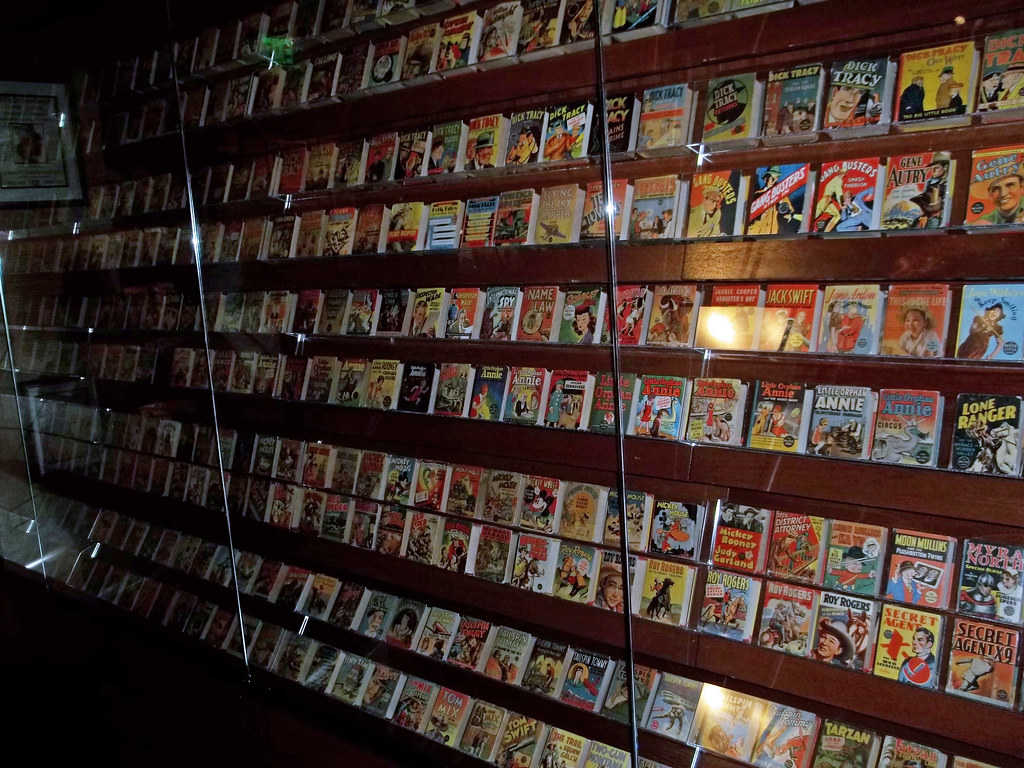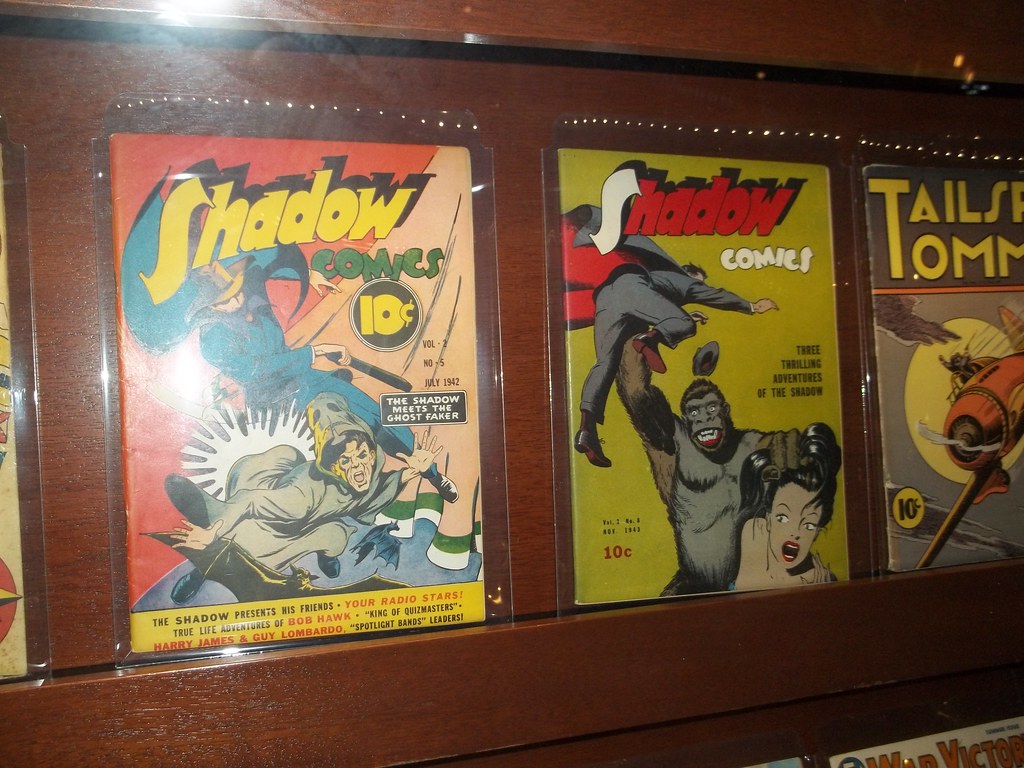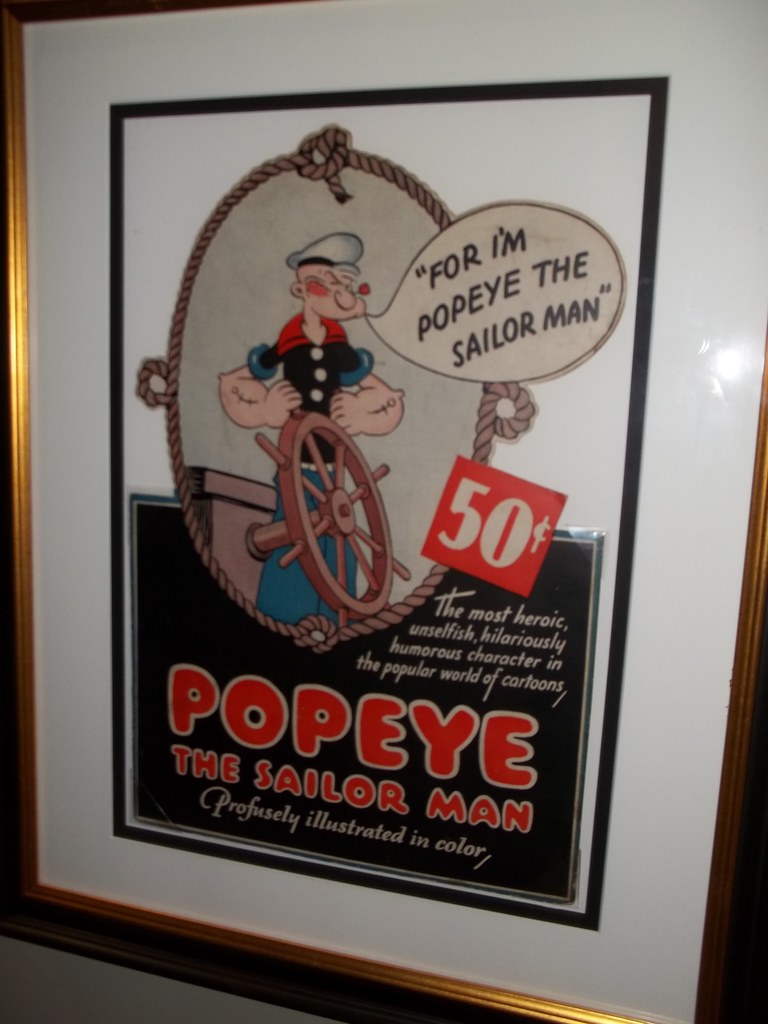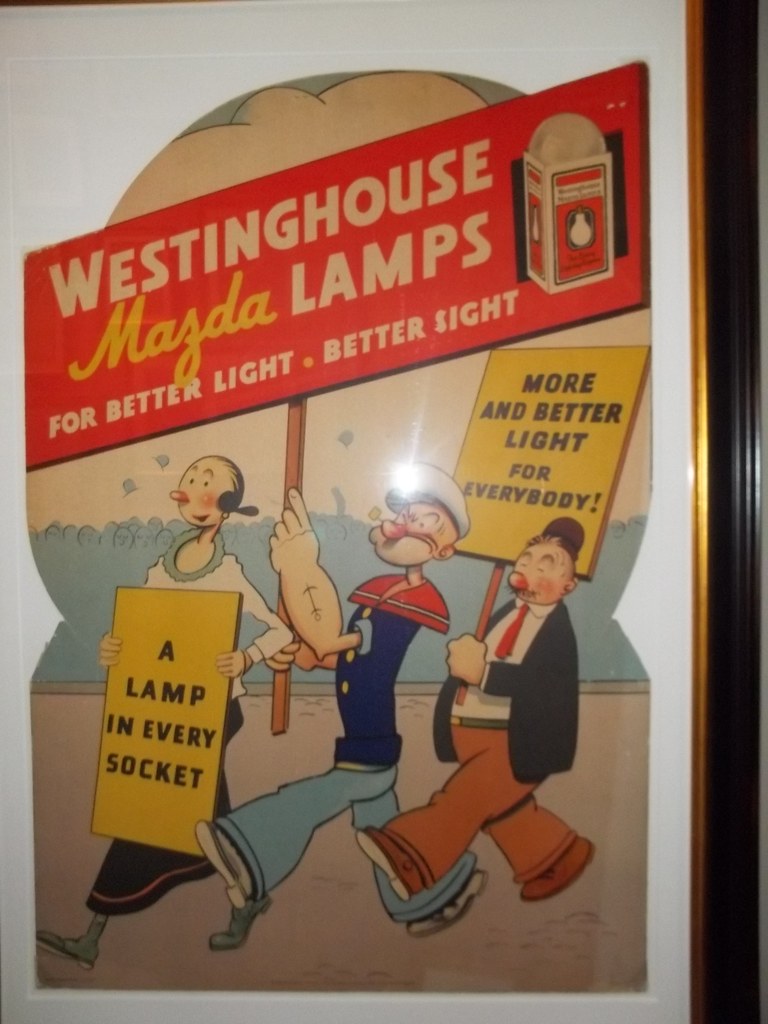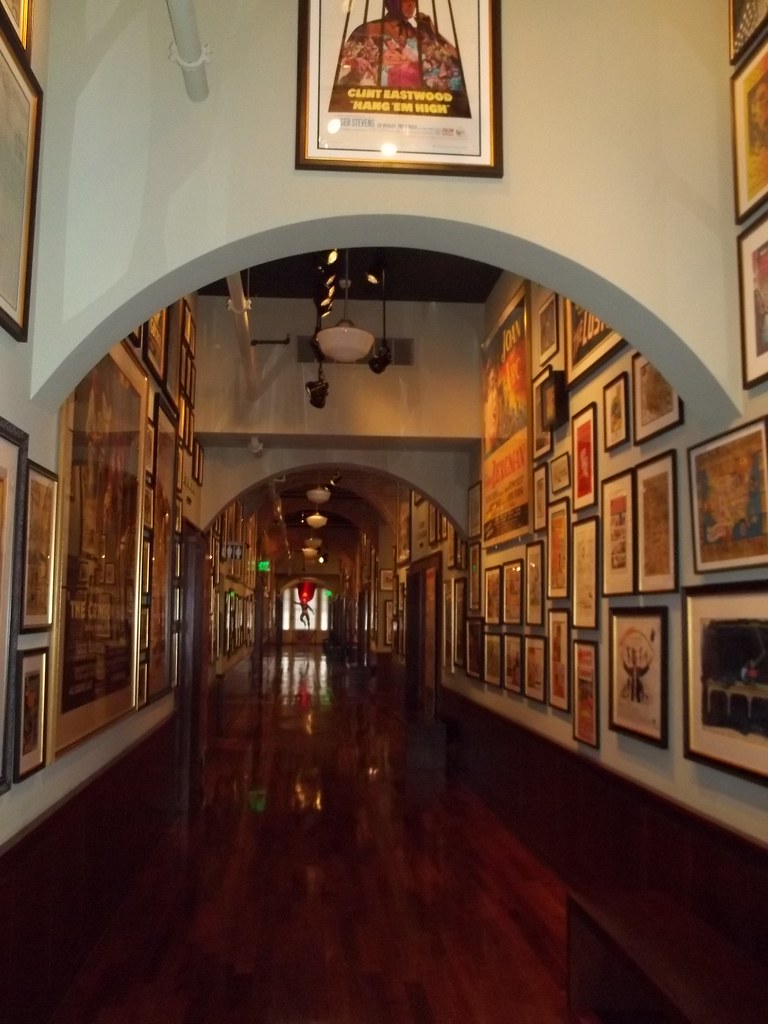By Mike Rhode
Shortly after the announcement that Steve Geppi of Baltimore would be closing his Geppi’s Entertainment Museum in Baltimore and donating its holdings to the Library of Congress, I reached out to Library of Congress graphic arts curator Sara Duke (a personal friend of mine) for her thoughts on the donation.
MR: Whose idea was this donation? Did it come from the top down?
SD: My understanding is that Dr. Hayden and Steve Geppi have been long-term friends going back to her days at the Enoch Pratt library. The directive from inside the Library came from her, but the staff in the Prints and Photographs and Serials divisions were enthusiastic about the opportunity.
MR: Do you know what the offer consisted of originally? Was it the entire contents of the Geppi’s Entertainment Museum (GEM)?
SD: Yes, we were told that we could have whatever we wanted from the museum. We don’t collect many three-dimensional objects, even though we’re in the process of building three more storage modules at Fort Meade to store our book collection, but even with that we don’t have sufficient space to store objects properly. So the decision was made to be very selective about 3-D works of art, but to be inclusive of works of arts on paper, photographs, newsprint, comic books, Big Little Books, sheet music and even some recorded sound.
MR: How was material selected? Did each department in the Library handle its own specialty?
SD: Teams of people from the Prints & Photograph and Serials divisions went to Baltimore. We were provided with a spreadsheet from the Museum, probably created by an appraiser, and from the inventory list, we worked room by room deciding what was wanted, what was actually on the walls or in the cases but not on the inventory list, and trying to ascertain what would come to the Library. It took several trips to do that as you would imagine. We sat down as a team and we reached out to colleagues in other divisions about what they would and would not take. We created a list of desiderata to give to Mr. Geppi’s representatives.
MR: Was material that was not on display included as well?
SD: No.
MR: Where is some of the non-art or serial material such as the Big Little Books going?
SD: They’ll go to Rare Books. They already have a collection.
MR: Are they taking all of them or cherry picking?
SD: I believe they’re cherry picking so they don’t create a duplicate set. But the Serials division decided they would be inclusive and make the Geppi comic book set the exhibit-only set, while the existing comics in the Library would be the reference collection that researchers could handle. It’s been a research collection, and people have been looking at them… it’s a double-edged sword. If we never let anybody look at them, they’d be pristine, but we’re a research institution and people are supposed to look at and handle things.
MR: I’ve seen some lists of the donation in various press releases. What are the highlights for you or your department?
SD: There are memorable pieces like the nine-sheet Bambi poster. We have a few nine-sheet posters in our collection, some attached and some detached, but that’s in spectacular condition. I know we have the display space for it at the Library of Congress, but it’s never going to look like it did in Geppi’s Entertainment Museum. That makes me sad. It was an over-the-top lovely gem (pun intended) of a museum. What stood out to me beside that? There’s some great comic strip drawings, an overwhelming number of posters -- some of which may be duplicates of what we have, but without taking a photograph of every one on the wall and comparing them against our collection, we just don’t know, and we didn’t have time to do that. So we’re taking every single poster that was on the wall.
And just because something wasn’t on the walls doesn’t mean it’s gone from the collection. Michael, the curator there, said he was forever moving art in and out. Between the times we went out during a snowstorm in March and then again in April, he had rotated things from the warehouse and the Museum.
MR: What does that mean for you guys? If you get to pick from the Museum, does that include the warehouse too?
SD: That has not yet been offered to us.
MR: When did this start? Obviously it would be a complex negotiation.
SD: Late last year, or very early this year. Mr. Geppi came to visit the Library two or three times last year. One time he saw the original art for Amazing Fantasy #15 (aka the first appearance of Spider-Man – MR). He came back down for a private conversation with Dr. Hayden and then we started talking about going up to Baltimore to figure out what it would mean as an institution to absorb his collection. For a lot of institutions, absorbing 3,300 items would be overwhelming but for us it’s routine.
MR: The material is going to be divided by divisions when stored in the Library?
SD: Right. There’s some pressed records that are quite rare that are going to Recorded Sound. There are some videogame sets that the Motion Pictures Division has expressed interest in. The Rare Book Division is in charge of the Big Little Books and maybe some of the early bound volumes. Prints & Photograph and Serials are the benefactors, overwhelmingly.
MR: Will there be a Geppi Collection, or is the material being integrated into existing material? Is there going to be an organizing principle so someone could rebuild the collection?
SD: That will depend, division by division. We’ll be sitting down to hammer out a plan, but Prints & Photographs will record the provenance to the nth degree and it will be known as the Stephen A. Geppi Collection of Comics and Graphic Arts.
MR: Is he giving you any money to catalog the material?
SD: No.
MR: Do you have any more personal favorites besides Bambi?
SD: It’s a sweet poster, but there’s some spectacular early Yellow Kid material, there’s some really great trading cards, some patches minor league baseball teams and a poster marketing them… What’s really intriguing in the ability with this acquisition to tell a story that you would think we could tell through copyright deposits, but cannot. Some of it is so ephemeral that I don’t think people thought to copyright it and some of it, more recent material, hasn’t been required to be deposited for copyright so we just didn’t acquire it. As an institution that has been so dependent on copyright deposit for its growth, until 1978 when the rules about what was required to be deposited changed, it’s really refreshing to have a popular culture collection come into the institution. It resets that type of collection and gives us what we’re lacking.
MR: I’ve heard that the Copyright department doesn’t necessarily keep a lot of what comes in…
SD: The majority of material sent in is reproductions, so if it’s not up to a standard that we consider acceptable, such as color photocopies, we are selective about what we acquire for the permanent collections. We want as original and as best an edition as we can possibly have. The changes in copyright law meant that people have copyright protection from the moment of creation so they no longer have to pay a fee to protect their interest and copyright, so we just don’t get the volume that we got 100 years ago.
MR: Did you take the Yellow Kid buttons?
SD: We’re intending to. We’re also getting the Mickey Mouse animation drawings for Plane Crazy, so sitting next to the ‘birth certificate’ for Spider-Man will now be the ‘birth certificate’ for Mickey Mouse and that’s a pretty enormous acquisition for the Library.
MR: The ones he donated to Mort Walker’s museum and then had to buy back when they auctioned them off to keep their doors open?
SD: It’s sad [when you consider] the number of cartoon museums that have closed in the last twenty years. Art Wood’s to Mort Walker’s to the Toonseum in Pittsburgh, and now Geppi. It’s a hard economy for something that’s so popular with America. It’s interesting that George Lucas is now opening an entertainment museum in California, but it seems like it’s a hard sell. Why is that? Is it that people of a certain income are willing to patronize fine art, but are not willing to patronize cartoon art? Is it just not enough of a draw to make people go back again and again? I certainly went to the Geppi Museum several times, and my son always had it on his required activity list for Baltimore. But apparently it wasn’t on enough people’s required activity list unfortunately. So who has benefited? It’s been larger repositories.
MR: My suspicion is that most mid-size cities have a comprehensive art museum, such as Indianapolis or Omaha, that covers 1000 years of art history without anyone thinking twice about it, but a standalone specialty museum probably always have more trouble than any other type. You can have a science, or natural history, or art museum and people can find enough different things to keep coming back for. When it’s a specialized museum that doesn’t change, or not as often, it probably affects attendance.
SD: For small museums, with small staffs, I think it’s hard to build programming to get people in the door consistently. And for all museums, they’ll never make more than 15% of their revenue in admission fees. They’re dependent on grants, memberships, special events, things like that.
MR: What else should I have asked about?
SD: What I try to make clear to everybody, is that while the Library is honored to have this collection, we are very saddened by the circumstances that led it to coming here. They did the right thing. The museum code of ethics says you don’t sell your collection, but you donate it to another institution. It’s a magnanimous gift. It really is. Quite frankly, it blows my socks off. We could never afford to buy or build this collection. People think the Library of Congress has bottomless pockets, but we don’t. We can’t afford to compete at auction for comic books and cartoon art and posters. We can buy selectively, but very few items come to us each year by purchase compared to what we get from gifts. This gift is amazing.
I think we can do it justice. There will be people that will resent that we can’t recreate GEM in its entirety and we can’t, but anybody with a reader’s card is welcome to come in and make use of the collection.
MR: There’s always going to be a difference between a museum, a library, and an archive, and no museum can put everything on display anyway.
SD: Right, and our exhibit space represents the wealth of the Library’s collections, so the graphic arts display is always going to be much smaller than GEM’s footprint. We will start exhibiting selections later this summer and we have every intention of creating a space in which comics and other works from the collection are featured prominently. It’s going to be very difficult to get it down to the Library. The Bambi and Ten Commandments posters are 90 x 90 inches. Finding physical room to store it and make it accessible to researchers is going to be challenging to say the least, but it’s a labor of love.
There were about 125 pieces of ‘original art’ – hand-drawn comic strips and animation cels – but we consider the posters and ephemera to be original art, so what’s coming to Prints & Photographs is probably equal to the number of comic books. It might not be equal in monetary value, and people would argue if it’s equal in historical value, but I make a case that it is. Monetary value aside, original art, posters and ephemera are equally important in understanding American popular culture. It’s a very, very generous gift and not one that we could replicate any other way.
























